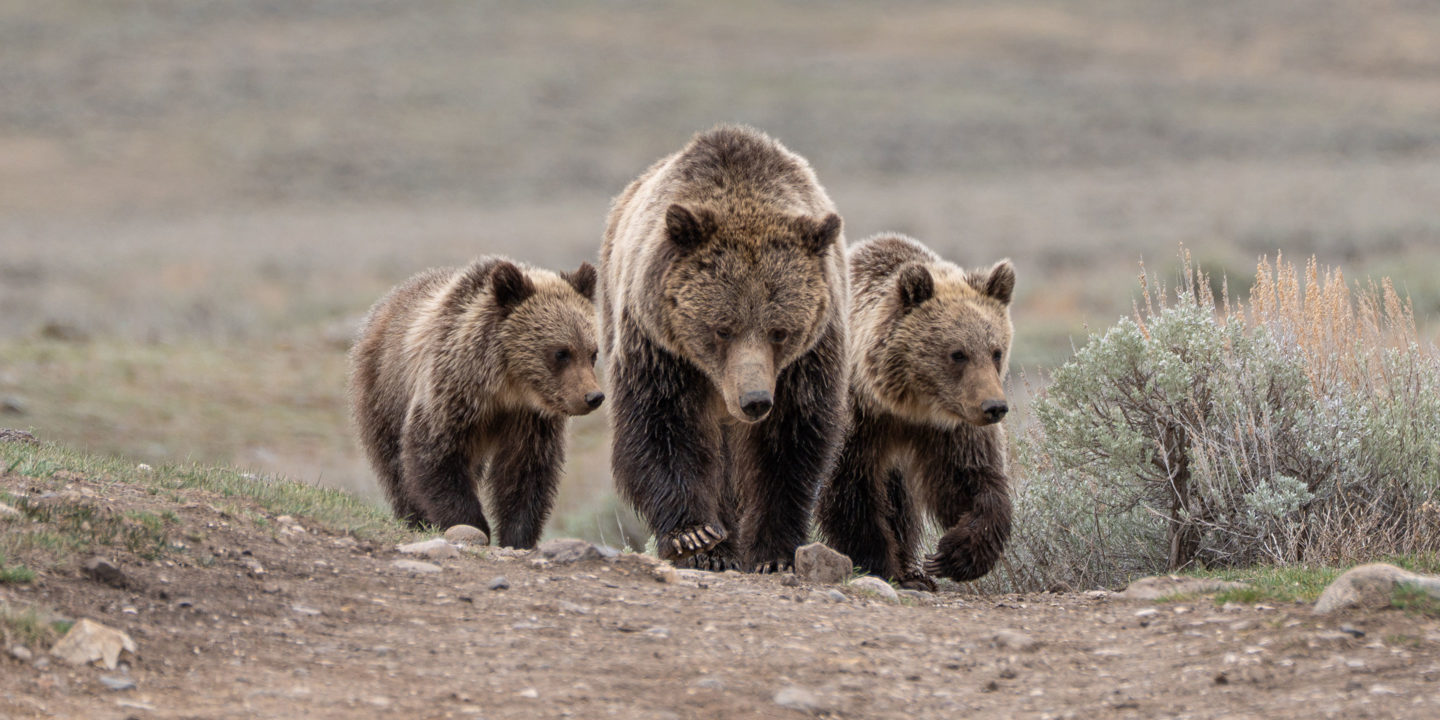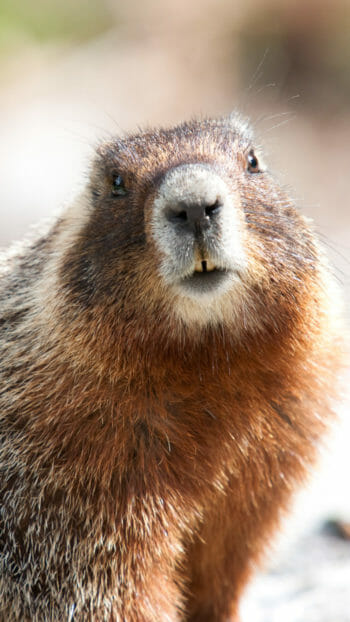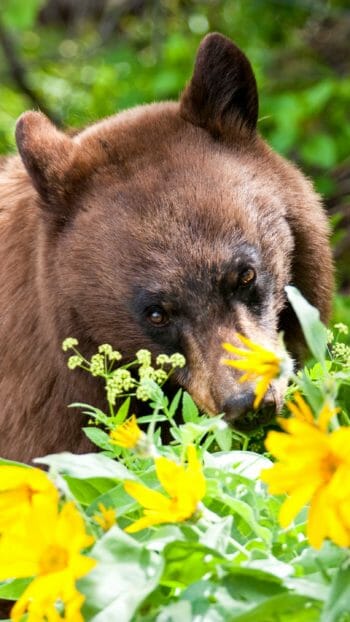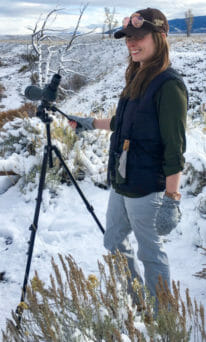Recently in Jackson Hole, a wave of heartbreak rippled through the local community and wildlife enthusiasts across the country with the news of a tragic loss: two yearling grizzly bear cubs had been found dead in Grand Teton National Park.
Grizzly 1063, an eight-year-old female residing in Grand Teton National Park, has become a well-known figure in the area. After years of watching her confidently navigate her territory since she struck out on her own, locals and visitors alike were thrilled when she emerged in the spring of 2024 with her first litter—three impossibly small, energetic cubs. That summer, the Pilgrim Creek area came alive with crowds of observers, their spotting scopes and long lenses trained on the mother and her young. Cars lined the roadsides, children pointed excitedly from open windows in passing vehicles, and social media lit up with heartwarming images of the grizzly family foraging, playing, and simply being bears in their natural environment.
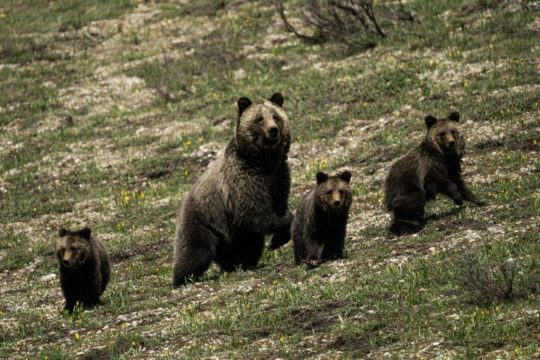

The following spring, the excitement continued. The family reemerged in the spring of 2025 after a long winter of hibernating, all three cubs strong and growing. But the joy of their return was heartbreakingly brief.
On the morning of Tuesday, May 13, Grand Teton National Park rangers discovered the carcasses of two yearling grizzlies south of Colter Bay. The cubs, quickly identified as belonging to 1063, showed signs of being killed by a larger bear. The third cub was initially missing, feared dead. A glimmer of relief came when 1063 was later spotted with her remaining cub, offering some comfort amid the shock and sorrow that swept through the region.
To many, this loss felt senseless. But in the world of wild grizzlies, it was entirely natural.
Male grizzlies—known as boars—pose one of the greatest threats to cubs. In the spring, boars begin seeking mates, roaming territories that can span more than 600 square miles. A sow with cubs won’t be receptive to mating for over two years while she raises her offspring. Because of this roadblock, a boar’s instinct is to kill those cubs to make the mother available again. The size difference between males and females means sows rarely win in direct confrontations. Instead, they rely on avoidance to protect their young.
Ironically, this is why grizzly mothers are often seen close to roads and developed areas in Grand Teton. Humans tend to deter grizzly boars, so sows use our presence as a kind of shield, choosing proximity to people over space in the backcountry. But this strategy comes with risks: the danger of vehicle strikes, the exposure of human food, and the constant stress of navigating our world. Just last fall, the iconic Grizzly 399 was killed by a vehicle south of the park, leaving her final cub to face a daunting winter alone.
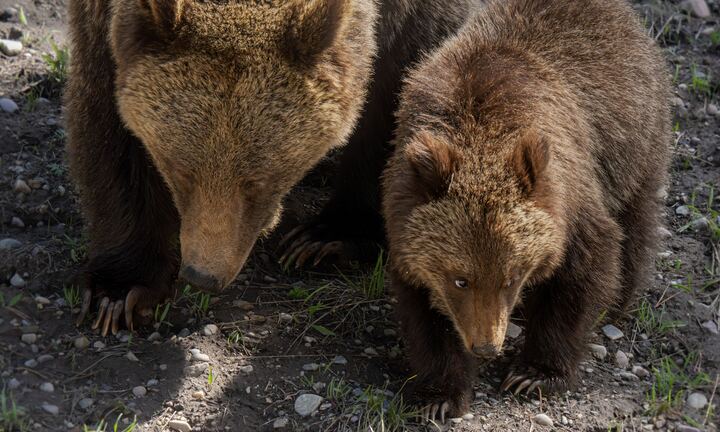
For a grizzly mother, raising cubs is already a monumental task. She must find enough food for every mouth, teach her cubs how to forage, hunt, avoid predators, and prepare for hibernation—all while evading dangers from both the natural and human worlds. Boars aren’t her only threat, but they represent one of the most immediate and devastating. This brutal part of grizzly behavior serves a role in maintaining population balance, yet it’s heartbreaking to witness.
As visitors to our national parks, we are drawn to the wonder of seeing these animals in the wild, but not everything wild is pleasing to the eye. Nature is raw, unfiltered, and often unforgiving. It’s easy to feel emotionally invested in individual animals, especially those we see repeatedly or follow online. And when they’re lost, it hurts. Even so, it’s essential to remember that our human emotions don’t govern the rhythms of the wild.
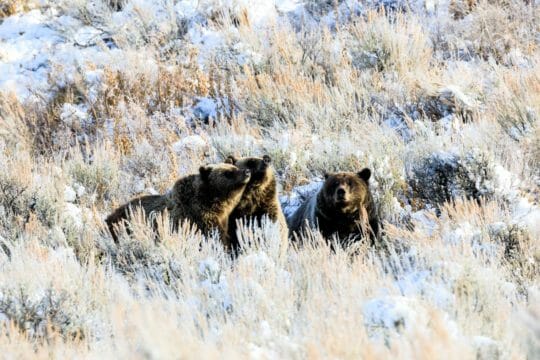
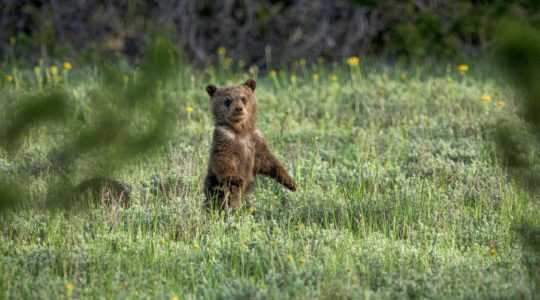
Instead of turning away from the harsh truths, let’s use them to deepen our respect. The life of a grizzly bear is full of difficulty, danger, and perseverance. That’s exactly what makes those peaceful moments—watching a sow and her cubs graze on a hillside, or seeing young siblings wrestle in the snow—so profoundly meaningful. These glimpses are a privilege. They remind us that wild animals live by rules far older than our own.
Grizzlies like 1063 don’t ask for sympathy—but they deserve our reverence. And as stewards of their habitat, we owe it to them to preserve the wildness that shapes their world, in all its beauty and brutality.
FAQs
How do grizzly bears raise their cubs in the wild?
Grizzly bear mothers are solely responsible for raising their cubs, typically keeping them by their side for two to three years. During this time, she teaches them how to forage, avoid predators, and prepare for hibernation. It’s a demanding and dangerous period, especially in the presence of male bears, harsh environmental conditions, and increasing human activity in their habitat. Successful rearing requires constant vigilance and an exceptional ability to navigate both natural and human threats.
Why do male grizzly bears sometimes kill cubs?
Male grizzlies will sometimes kill cubs to bring the mother back into estrus so she can mate again. Since a sow with cubs won’t be receptive for another two to three years, eliminating the cubs can give the male a chance to pass on his own genes. This instinctual behavior plays a role in population dynamics but is one of the greatest threats to young grizzlies in the wild.
How likely am I to see a grizzly bear on a Grand Teton wildlife tour?
While wildlife sightings are never guaranteed, Grand Teton National Park is one of the best places in the Lower 48 to see a grizzly bear in the wild. Spring and early summer are peak times, especially in areas like Pilgrim Creek and Willow Flats. Joining a guided wildlife tour greatly increases your chances, as expert guides know the bears’ seasonal movement patterns and prioritize safety and ethical viewing practices.
What is the best way to see grizzly bears in Grand Teton National Park?
The best way to see grizzlies in Grand Teton National Park is by joining a guided wildlife tour with experienced naturalists. Professional guides know the seasonal movement patterns of grizzly bears and can safely lead you to high-probability viewing areas like Pilgrim Creek, Willow Flats, and Oxbow Bend. Early morning and evening are ideal times for sightings. Tours also provide high-powered spotting scopes and ensure that wildlife is viewed ethically—from a safe distance, with minimal disturbance to the bears.

